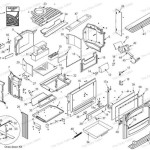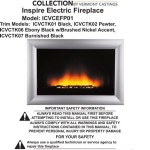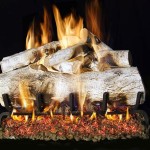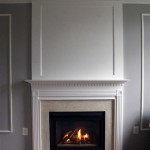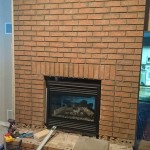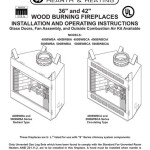Candice Olson Fireplaces Incident: An Overview
Candice Olson, a renowned interior designer, is celebrated for her sophisticated and functional designs that often incorporate fireplaces as focal points. However, there have been instances where projects attributed to or associated with her expertise have faced scrutiny regarding fireplace design and installation. These incidents, sometimes involving reported code violations, malfunction, or aesthetic dissatisfaction, have prompted discussion within the design and construction communities. Understanding the nuances of these situations requires a comprehensive examination of various factors, including design choices, installation practices, regulatory compliance, and client expectations.
The term "Candice Olson Fireplaces Incident" is not necessarily indicative of a single, widely publicized event but rather refers to a collection of individual cases or concerns raised about fireplace projects that have either been directly designed by Olson or bear resemblance to her signature design style. This style often emphasizes clean lines, modern materials, and integration of the fireplace into the overall architectural and decorative scheme. While Olson's designs are generally well-regarded, the implementation of any design, particularly those involving gas or wood-burning fireplaces, is subject to rigorous safety standards and building codes. Deviations from these standards, or even perceived design flaws that compromise functionality or safety, can lead to issues that are then discussed and debated, sometimes under the umbrella term of a "Candice Olson Fireplaces Incident."
Key Point 1: Design Choices and Their Implications
The aesthetic choices made in fireplace design can have significant implications for safety and functionality. Candice Olson's designs often incorporate contemporary materials such as glass, stone, and metal, which can affect heat distribution and ventilation. The proximity of combustible materials to the fireplace opening is a critical consideration governed by building codes. If a design places wood framing, drywall, or other flammable materials too close to the firebox, it can create a fire hazard. Similarly, the size and placement of the fireplace opening, along with the flue and chimney system, must be carefully calculated to ensure proper drafting and prevent the buildup of dangerous gases like carbon monoxide.
Another design consideration involves the integration of the fireplace into the overall room layout. Improper placement can lead to inefficient heating or cooling, drafts, and discomfort for occupants. The designer must account for factors such as room size, ceiling height, and the location of windows and doors to ensure that the fireplace functions effectively and safely. Furthermore, the design must consider the type of fuel being used. Gas fireplaces require a dedicated gas line and proper ventilation to prevent leaks and explosions. Wood-burning fireplaces require a properly sized chimney and adequate clearance from combustible materials. These considerations are critical and, if overlooked, can lead to significant problems.
Furthermore, the long-term maintenance and upkeep of the fireplace must be factored into the design. Some designs may incorporate unique or unusual materials that are difficult to clean or repair. Access panels for inspection and maintenance of the firebox, flue, and gas lines must be strategically located to allow for easy access. Failure to consider these maintenance aspects can lead to neglect and potential safety hazards over time. The selection of appropriate materials and the incorporation of accessible maintenance features are integral to a successful and safe fireplace design.
Key Point 2: Installation Practices and Code Compliance
Even the most well-designed fireplace can be rendered unsafe or dysfunctional if not installed properly. Installation practices must adhere to strict building codes and manufacturer specifications to ensure safe and efficient operation. This includes proper flue sizing, chimney construction, gas line connections, and electrical wiring. Local building inspectors typically conduct inspections at various stages of the installation process to verify compliance with these codes. Failure to pass these inspections can result in costly delays and require corrective action.
One of the most common installation errors is improper flue sizing or chimney construction. The flue must be sized appropriately for the fireplace opening and the type of fuel being burned. An undersized flue can lead to poor drafting, causing smoke and dangerous gases to back up into the room. Similarly, a poorly constructed chimney can leak, allowing water to enter and damage the fireplace and surrounding structure. The chimney must also be properly insulated to prevent heat loss and condensation, which can contribute to creosote buildup in wood-burning fireplaces. Creosote is a highly flammable substance that can lead to chimney fires if not regularly cleaned.
Gas fireplace installations require particular attention to detail. Gas lines must be properly sized and connected to prevent leaks. The gas valve must be tested for leaks and calibrated to ensure the correct gas pressure. The fireplace must be properly ventilated to prevent the buildup of carbon monoxide. Carbon monoxide is a colorless and odorless gas that can be deadly if inhaled in sufficient quantities. Carbon monoxide detectors should be installed in the vicinity of gas fireplaces to provide an early warning in case of a leak. Electrical wiring for gas fireplaces must also be done correctly to prevent electrical shocks and fire hazards.
Key Point 3: Addressing Client Expectations and Communication
Clear and open communication between the designer, installer, and client is crucial to ensure that the final product meets expectations and adheres to safety standards. Clients often have specific aesthetic preferences and may not fully understand the technical requirements of fireplace design and installation. It is the responsibility of the designer and installer to educate the client about these requirements and to ensure that the design is both aesthetically pleasing and functionally sound.
One common challenge is managing expectations regarding the performance of the fireplace. Clients may expect a fireplace to heat a large area, but the actual heating capacity depends on various factors, including the size of the fireplace, the type of fuel being used, and the insulation of the room. It is important to provide realistic estimates of the fireplace's heating capacity and to recommend alternative heating solutions if necessary. Clients should also be informed about the ongoing maintenance requirements of the fireplace, such as chimney cleaning and gas line inspections. Regular maintenance is essential to ensure the safe and efficient operation of the fireplace over time.
Furthermore, clear communication is essential during the installation process. Clients should be informed about the timeline for the project, any potential disruptions to their home, and the steps being taken to ensure safety and code compliance. Any changes to the design or installation plan should be discussed with the client and documented in writing. This helps to prevent misunderstandings and ensures that everyone is on the same page. In the event that problems arise during the installation process, they should be addressed promptly and transparently. Open communication and a willingness to resolve issues are essential to maintaining a positive relationship with the client and ensuring a successful project outcome.
In summary, while Candice Olson's design aesthetic is widely admired, any fireplace project must prioritize safety, functionality, and code compliance. This requires careful attention to design choices, installation practices, and clear communication with the client. While incidents or concerns regarding fireplace projects associated with her name have arisen, they highlight the importance of these factors in ensuring successful and safe fireplace installations.

Candice Olson Bad Balance Can Put Room Out Of Kilter

Candice Tells All Basement Fireplace Becomes Focal Point Of Retreat The Times Herald

105 Candice Olson Living Room Design

Taming The Wild West In A Revamped Log House

Diving Design Basement Transformation

Candice Tells All Secrets Of Indestructible Design

Kids Playroom Becomes Fun For All Ages Orange County Register

Renovation Brings Together Old World Charm And A Modern Look
How To Make Your Living Room Look More Spacious

Candice Olson Living Rooms Transitional Room

